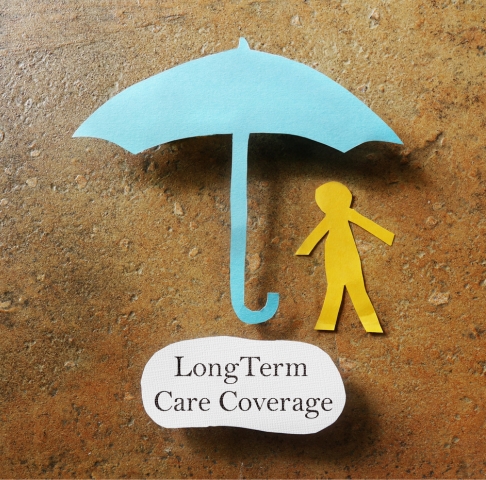You’ve probably fed your spouse pizza or ice-cream on a date. You might’ve also spoon-fed your husband or wife porridge when they were too ill to do it themselves.
Occasionally feeding your able-bodied spouse is seen as a sweet gesture of couple love and it’s entirely voluntary. But what if you had to feed them indefinitely due to severe disability?
Suddenly having to help your loved one with activities of daily living like eating, showering and moving around can be very stressful and may even strain your relationship – especially if you have to assist them 24/7 without a clear end date. However, there are ways to be a good caregiver and happy spouse at the same time.
In this article, I’ll share ways to balance the roles of caregiver and spouse when looking after a husband or wife who develops a disability.
- Singapore’s growing need for long-term care
- The most common caregiving arrangement
- How spousal caregiving can affect couples
- 7 tips to balance being a caregiver and spouse
Singapore’s growing need for long-term care
Severe disability is defined as the inability to perform at least three out of six Activities of Daily Living (see the infographic below for details). It can develop suddenly as a result of events like a stroke or even a spinal cord injury following an accident. It could also develop gradually with age due to the progression of illnesses such as diabetes and dementia. A person can stay severely disabled temporarily or over a prolonged period.
The most common caregiving arrangement
Being an ageing population, more and more people could need long-term care in Singapore over time. The question is, who will provide this long-term care? According to Singlife’s Long Term Care Research 2024 Study, it’s usually a family member.
The study on consumer perceptions around financing long-term care for disability and dementia found that 24% of survey respondents preferred to stay at a nursing home and 27% preferred to have a qualified nurse visit them every day if they ever needed long-term care. However, in reality, the most common type of long-term care is a family member taking care of their loved one at home.
Additionally, the Agency for Integrated Care’s AIC Caregiving Survey 2022 – where respondents were unpaid caregivers of frail seniors or caregivers of persons with dementia, mental health conditions, stroke, cancer or terminal/life-limiting conditions aged 21 years old and above - reveals that “spouse” is the third most common relationship between caregiver and care recipient after parent/parent-in-law and children/children-in-law.
So, spousal caregiving could become more common. My general observation over the past decade is that there are now more senior couples where one party is caregiver to the other. There might be social reasons for this.
1. Smaller families could mean that senior couples have fewer or no children to depend on for long-term care.
2. Seniors today are more self-reliant and may prefer to manage their own affairs rather than “burden” their adult children who may have their hands full with their own families.
We need to prepare ourselves for what spousal caregiving entails, if we choose to take this route over other caregiving options.
How spousal caregiving can affect couples
I admire the deep devotion of caregiving spouses. Some marriages grow stronger as a result of spousal caregiving. More often than not, however, the immense challenges of being a spousal caregiver can have potential ramifications for a couple’s relationship.


What’s the difference between being a husband/wife and a caregiver?
Spousal relationship: It’s a two-way relationship with both parties involved emotionally, physically, mentally, sexually, spiritually and financially.
Caregiver relationship: It’s one-way with one party doing all the work of attending to all the other’s physical needs.
When you’re suddenly thrust into the role of a primary caregiver to a spouse who has become unable to perform daily activities of living, the transition can be huge. It can affect your mental, emotional and personal health, your career and personal life plans, as well as your personal relationships. Perhaps most significantly, it’ll also impact your relationship with the person you’ve shared a great part of your life with, who now depends on you for their every need.
The spousal caregiver may face some or all of these issues, which could test the marriage:
- Burnout & stress
- Isolation
- Depression
- Resentment
- Guilt
- Overwhelmed
- Unbalanced marriage
So, if we suddenly found ourselves in such a position one day, how could we balance between being a spouse and a caregiver?
7 tips to balance being a caregiver and spouse
After observing couples where one party is the main caregiver to a spouse who is unable to perform activities of daily living independently, here are my tips for balancing being a caregiver and spouse…
1. See each other’s perspective
Imagine a woman who has poor balance due to a stroke. She knows a fall could cause serious injuries like a hip fracture or even be fatal. And yet, she doesn’t heed her caregiver husband’s rules: use her walker to move around the house or wait for him to help her. She insists on moving from the bed in their bedroom to the dining table by herself. She ends up falling hard, her head hitting a bookcase. Her husband rushes out of the kitchen to her aid, scalding himself with the soup he was preparing for her in the process. Both land in hospital.
Such incidents can be sad and frustrating for both caregiver and care recipient. The caregiver husband has established certain rules to protect his wife from hurting herself and feels responsible for her fall. On the other hand, the care recipient wife might see her dependence on him as loss freedom and identity, and feel guilty about him having to do so much for her. This conflict can be challenging for even the most loving couples.
It’s important for a couple to accept the disability as something that’s happened to the marriage, not just “to him/her”. They need to be open about their thoughts, feelings and expectations of each other. Fostering greater understanding and seeing the disability as shared, just as with all other couple struggles and joys, can help them move forward and adapt to their new situation together.
2. Practise self-care
To be a good caregiver to your spouse, you need to look after yourself first – both your physical health and mental health. Just as you’re super-diligent about following your loved one’s daily care routine for meals, medicine, bath, exercise, etc, it’s equally important to have your own routine each day. Whether it’s doing morning exercises before you start your caregiving duties for the day, enjoying your favourite beverage while your spouse takes a nap or unwinding with music or a book each night, do something that relaxes you – without fail. When you’re calm and centred, you’ll feel happier, and these positive vibes will rub off your spouse too.
3. Have quality moments together
Caregiving is a 24/7 role, but making room for quality time together can prevent the relationship from becoming a very functional one. Depending on your spouse’s mobility, you could go for a stroll or drive, play a game or watch a movie together. While it may seem like another addition to your endless to-do list, working in couple time can be immensely rewarding and these priceless moments will bring you closer as husband and wife.
4. Keep in touch with friends
Caregiving can leave you too exhausted to even think of having a social life or leaving the house. However, being around people other than healthcare professionals and other caregivers can help relieve caregiver stress and benefit the care recipient. Hang out with a circle of close family or friends on a regular basis and do things that suit the affected party’s abilities. Educating others about your spouse’s condition may take effort but will make them understand why you need to help your spouse use the toilet or consume food via a tube – which they may then offer to help you with. These social interactions can minimise feelings of isolation and withdrawal for both parties. They also give husband and wife something to talk about and look forward to as a couple.
5. Remember that you’re still an item
Emotions must be handled delicately when there are different levels of ability in the marriage. The healthy partner should be mindful not to pity or infantise their spouse and instead protect their dignity. Meanwhile, the care recipient shouldn't vent their frustrations on the caregiver. The key is to maintain that mutual respect you’ve always had for each other. If they still have mental capacity, include the disabled spouse in decisions – not just those concerning their care but also things like where to go for your next date or plans for your children’s tertiary education. If they don’t have mental or speaking capacity, they may still be able to communicate their feelings through their body language, so don’t ignore what their actions are saying.
6. Have time apart
Having personal space is essential for a healthy marriage, even more so when one spouse is the main caregiver to the other. While it’s harder to find personal space as a spousal caregiver, you could look to close family or friends to help care for your spouse for a few hours or days while you do something for yourself – whether it’s a short course or trip, or a spa treatment. Depending on your spouse’s abilities and needs, you could engage the Agency for Integrated Care’s Day Care service where their basic needs like bathing and dressing will be taken care of, and they can even enjoy recreational activities. You could also opt for professional caregiving services through platforms like Homage which offers trained caregivers who can look after individuals at home and accompany them for medical appointments.
7. Laugh together
The best medicine for depression and boredom could well be laughter. Humour can keep that spark in your relationship which is so crucial when things aren't smooth-sailing for you both. Reminisce the silly things you’ve done together by watching old videos or looking at photos together. Laughter releases feel-good hormones. Plus, recalling these memories is one way to help individuals with dementia as well as their spousal caregiver.
Conclusion
It’s heartbreaking when a spouse acquires a disability. Being a full-time spousal caregiver is extremely demanding and committing to this role is nothing short of a selfless act of love. If you or someone you know is a caregiver spouse, remember that it’s essential to find a balance between being a caregiver and spouse in order to protect your wellbeing and relationship.
Don’t ignore the value of support groups for caregivers – in person or via social platforms – where you can exchange experiences with other caregivers. When you’ve lost a great deal of your spouse and can no longer look to them for support, other caregivers can help keep you afloat.
Whether or not you think severe disability could affect your marriage, it's always wise to make certain arrangements in advance and while you still have the mental capacity to do so. These include making a will, making an Advanced Medical Directive and setting up a Lasting Power of Attorney. You should also ensure you have financial plans in place so your dependants will be financially secure should the unexpected occur.
Notes
1. Source: CareShield Life, “Why do you need to plan for your future long-term care needs?”, accessed on 1 April 2024.
2. Source: Agency for Integrated Care, "AIC Caregiving Survey 2022".








